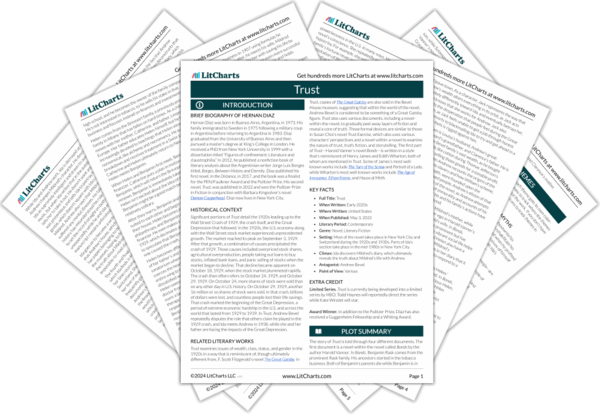Trust examines issues of wealth, class, status, and gender in the 1920s in a way that is reminiscent of, though ultimately different from, F. Scott Fitzgerald’s novel
The Great Gatsby. In
Trust, copies of
The Great Gatsby are also sold in the Bevel House museum, suggesting that within the world of the novel, Andrew Bevel is considered to be something of a Great Gatsby figure.
Trust also uses various documents, including a novel-within-the-novel, to gradually peel away layers of fiction and reveal a core of truth. Those formal devices are similar to those in Susan Choi’s novel
Trust Exercise, which also uses various characters' perspectives and a novel-within-a-novel to examine the nature of trust, truth, fiction, and storytelling. The first part of
Trust—Harold Vanner’s novel
Bonds—is written in a style that’s reminiscent of Henry James and Edith Wharton, both of whom are mentioned in
Trust. Some of James’s most well-known works include
The Turn of the Screw and
Portrait of a Lady, while Wharton’s most well-known works include
The Age of Innocence,
Ethan Frome, and
House of Mirth.
